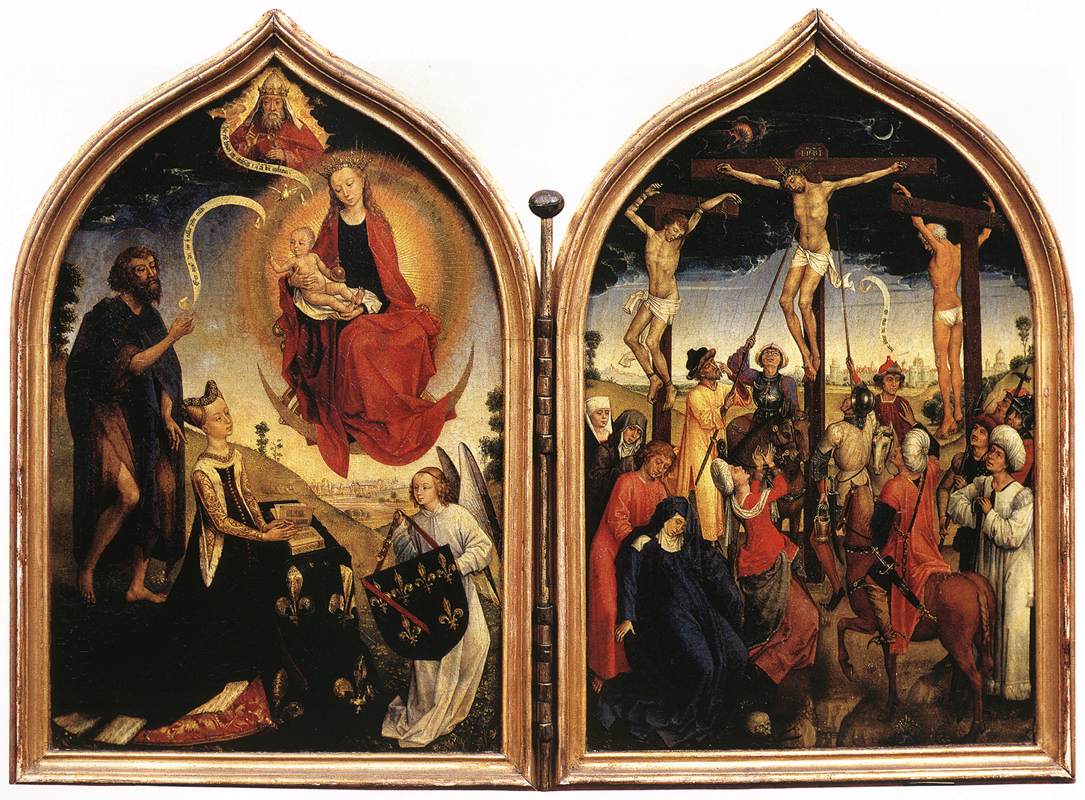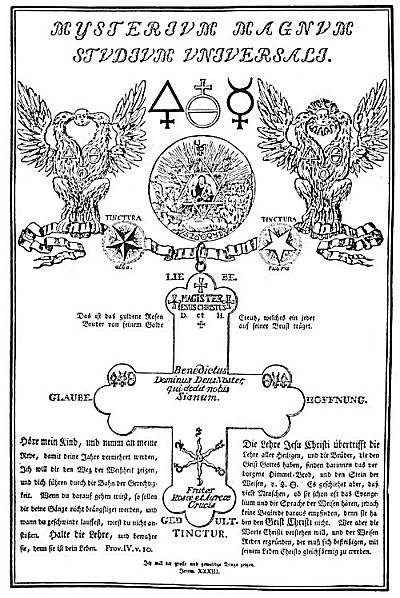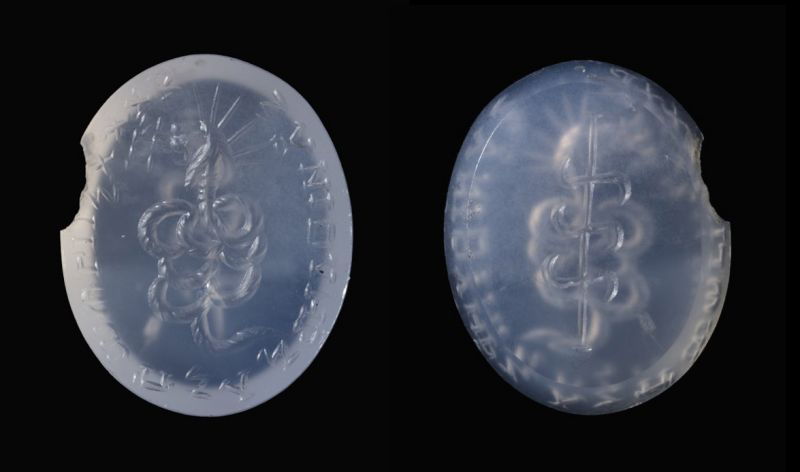Augustus Le Plongeon, in his Sacred Mysteries Among the Mayas and Quiches, notes that the Crux Ansata, which he calls The Key to the Nile and the Symbol of Symbols, either in its complete form or as a simple TAU, was to be seen adorning the breasts of statues and bas-reliefs at Palenque, Copan, and throughout Central America. He notes that it was always associated with water; that among the Babylonians it was the emblem of the water gods; among the Scandinavians, of heaven and immortality; and among the Mayas, of rejuvenation and freedom from physical suffering.
Concerning the association of this symbol with the waters of life, Count Goblet d’Alviella, in his Migration of Symbols, calls attention to the fact that an instrument resembling the Crux Ansata and called the Nilometer was used by the ancient Egyptians for measuring and regulating the inundations of the river Nile. It is probable that this relationship to the Nile caused it to be considered the symbol of life, for Egypt depended entirely upon the inundations of this river for the irrigation necessary to insure sufficient crops. In the papyrus scrolls the Crux Ansata is shown issuing from the mouths of Egyptian kings when they pardoned enemies, and it was buried with them to signify the immortality of the soul. It was carried by many of the gods and goddesses and apparently signified their divine benevolence and life-giving power. The Cairo Museum contains a magnificent collection of crosses of many shapes, sizes, and designs, proving that they were a common symbol among the Egyptians.
THE ROMAN AND GREEK CATHOLIC CROSSES
The third form of the cross is the familiar Roman or Greek type, which is closely associated with the crucifixion of Jesus Christ, although it is improbable that the cross used resembled its more familiar modern form. There are unlimited sub-varieties of crosses, differing in the relative proportions of their vertical and horizontal sections. Among the secret orders of different generations we find compounded crosses, such as the triple TAU in the Royal Arch of Freemasonry and the double and triple crosses of both Masonic and Roman Catholic symbolism.
To the Christian the cross has a twofold significance. First, it is the symbol of the death of his Redeemer, through whose martyrdom he feels that he partakes of the glory of God; secondly, it is the symbol of humility, patience, and the burden of life. It is interesting that the cross should be both a symbol of life and a symbol of death. Many nations deeply considered the astronomical aspect of religion, and it is probable that the Persians, Greeks, and Hindus looked upon the cross as a symbol of the equinoxes and the solstices, in the belief that at certain seasons of the year the sun was symbolically crucified upon these imaginary celestial angles.
The fact that so many nations have regarded their Savior as a personification of the sun globe is convincing evidence that the cross must exist as an astronomical element in pagan allegory. Augustus Le Plongeon believed that the veneration for the cross was partly due to the rising of a constellation called the Southern Cross, which immediately preceded the annual rains, and as the natives of those latitudes relied wholly upon these rains to raise their crops, they viewed the cross as an annual promise of the approaching storms, which to them meant life.
There are four basic elements (according to both ancient philosophy and modern science), and the ancients represented them by the four arms of the cross, placing at the end of each arm a mysterious Qabbalistic creature to symbolize the power of one of these elements. Thus, they symbolized the element of earth by a bull; water by a scorpion, a serpent, or an eagle; fire by a lion; and air by a human head surrounded by wings. It is significant that the four letters inscribed upon parchment (some say wood) and fastened to the top of the cross at the time of the crucifixion should be the first letters of four Hebrew words which stand for the four elements: “Iammin, the sea or water; Nour, fire; Rouach, the air; and Iebeschah, the dry earth.” (See Morals and Dogma, by Albeit Pike.)

Moe is the founder of GnosticWarrior.com. He is a father, husband, author, martial arts black belt, and an expert in Gnosticism, the occult, and esotericism.



![How, among innumerable other miracles of healing wrought by the wood of the cross, which King Oswald, being ready to engage against the barbarians, erected, a certain man had his injured arm healed [634 A.D.] | Book 3 | Chapter 2 How, among innumerable other miracles of healing wrought by the wood of the cross, which King Oswald, being ready to engage against the barbarians, erected, a certain man had his injured arm healed [634 A.D.] | Book 3 | Chapter 2](https://www.gnosticwarrior.com/wp-content/plugins/contextual-related-posts/default.png)
